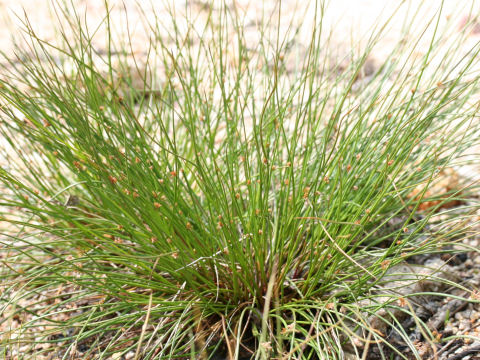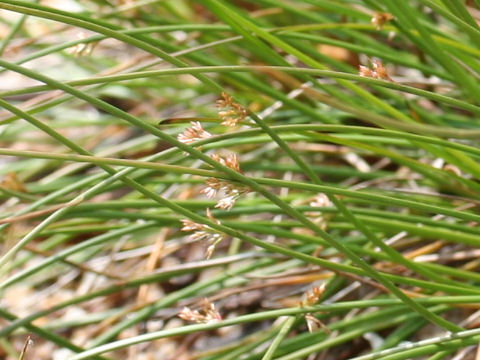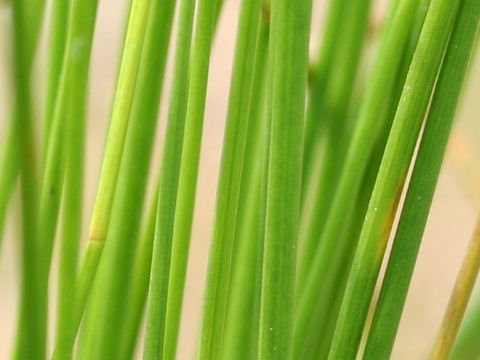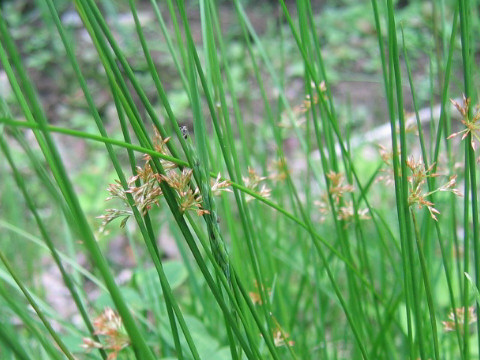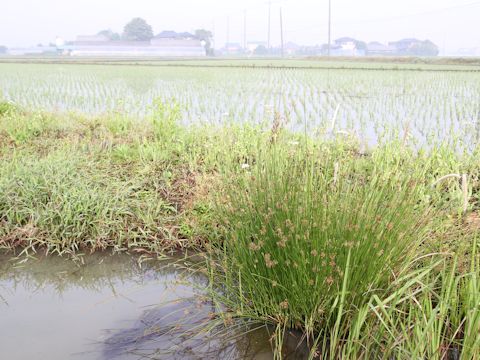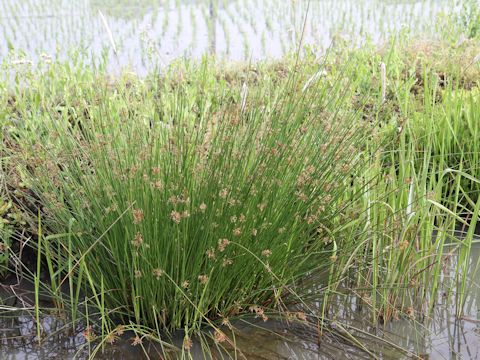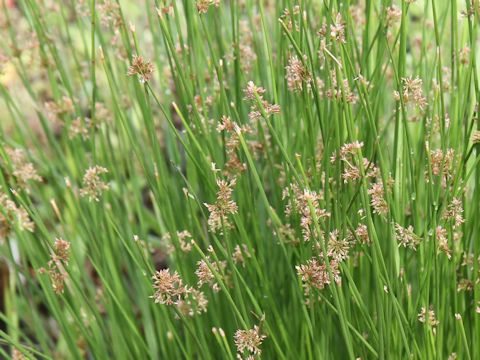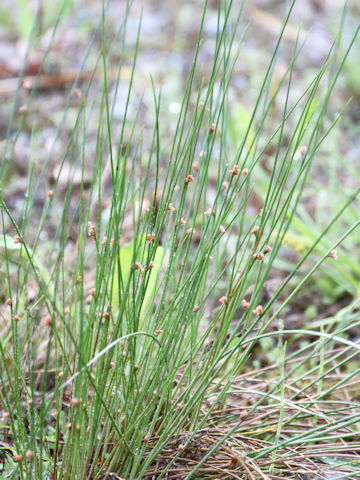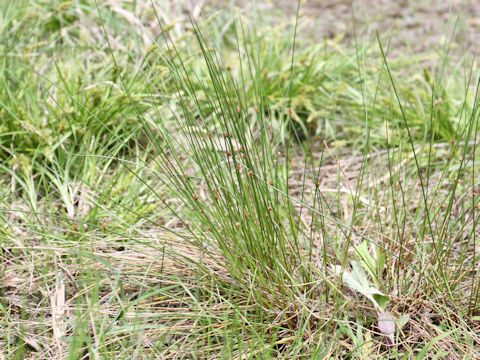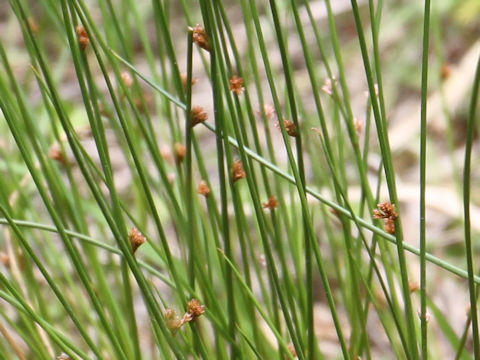
|
The Soft rush (Juncus effusus var. decipiens) belongs to Juncaceae (the Rush family). It is a perennial herb that is native to Japan, as well as Taiwan, the Korean Peninsula, China and India. This herb grows in swamps of fields and dales, and it can reach 60-100 cm in height. The stems are columnar with scarly, reduced, reddish brown leaves at the underpart. The cymes are borne atop of the stems from June to September. The bracts are put on top of clusters. Soft rush has been cultivated in the ricefields since 15th century in Japan. Nowadays, the main producing district is Kumamoto and Fukuoka prefecture. It is used as a material for making tatami matting, hana-mushiro (rush mats with floral patterns) and zori (Japanese sandals). Its dried piths was used lamp-wicks for an andon in former days. In Taiwanese Chinese, it is called "燈心草" and "灯心草" (deng xin cao).
|

